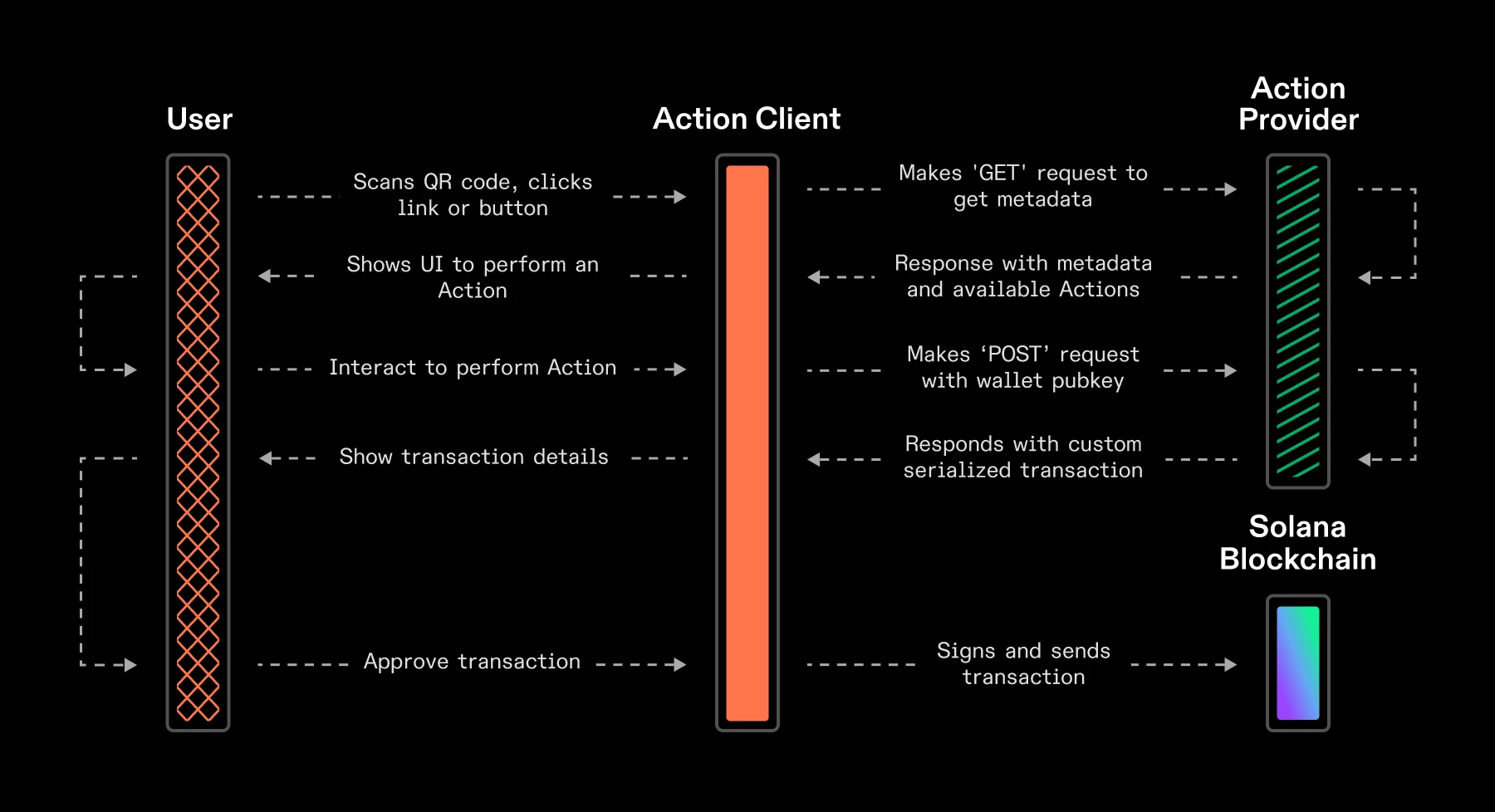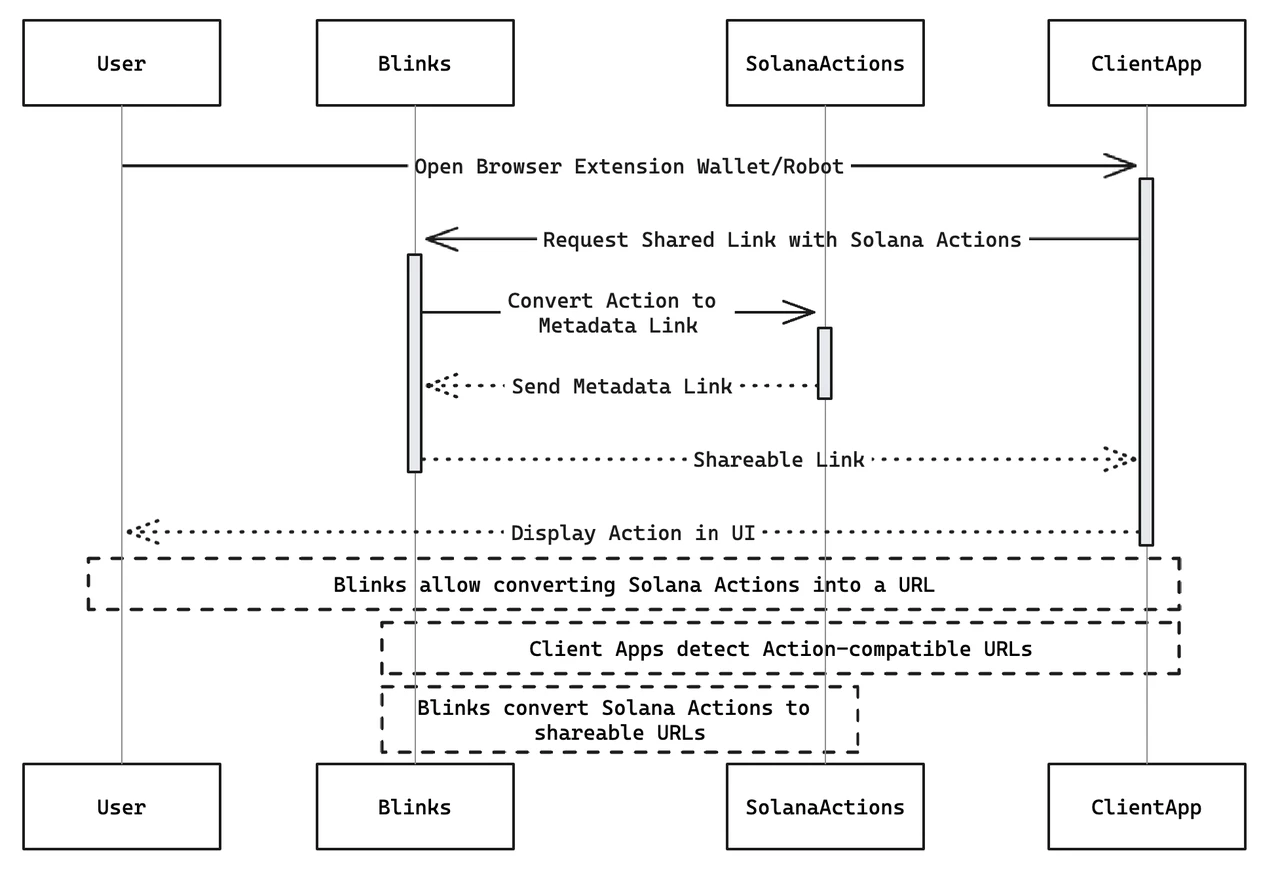Introduction
Recently, the Crypto market has been affected by the Mtgox compensation and the sell-off by the governments of the United States and Germany, causing panic among investors. Most tokens have experienced a decline of more than 20%, but there are also some tokens that have remained relatively "resilient", with SOL being one of them. Solana, as a public chain project, adopts a hybrid consensus mechanism of Proof of Stake (PoS) and Proof of History (PoH), introducing a timestamp mechanism while using multi-thread parallel processing and state compression technology, enabling Solana to have the advantage of high throughput and low transaction costs.
Solana has successively released three major innovative technologies: Actions, Blinks, and ZK Compression, enabling it to expand into the field of SocialFi and significantly reduce existing transaction costs. These three new technologies will boost Solana's future development, creating new expectations for the market. In addition, with the application for spot ETFs, Solana's future expectations and narratives are full of imagination.
Actions
Definition
According to Solana's official documentation, Actions are an API designed to allow websites to interact with the Solana blockchain, enabling on-chain activities such as transfers, voting, and donations. It is a standardized API that returns transactions on the Solana blockchain, which can be previewed, signed, and sent in various contexts, including QR codes, buttons + widgets (user interface elements), and websites on the internet.
In non-technical terms, Actions are pre-defined transactions in Solana that require signatures, allowing users to execute blockchain transactions without navigating to different applications or web pages. Actions abstractly describe the on-chain transaction processing mechanism in Solana, containing execution instructions for various tasks such as transaction processing, contract execution, and data operations. Users can use Actions to send various transaction instructions, such as on-chain asset transfers and token asset purchases. Additionally, developers can utilize Actions to call and execute smart contracts, implementing complex on-chain logic.
The introduction of Actions makes Solana network application development and user transactions more convenient, while also providing support for on-chain smart contract execution, laying a solid foundation for Solana's entry into the field of SocialFi.

Workflow diagram of Actions (Source: https://solana.com/docs/advanced/actions)
Advantages
Efficient processing: Solana's main advantage compared to other public chains is its high performance. In the design and adoption of Actions, Solana still maintains the concept of high performance. Solana uses a technology called Turbo Transactions, which utilizes multiple CPU cores to process transactions in parallel, further increasing the network's throughput and execution speed. When processing Actions, it enables rapid execution in a large-scale network while maintaining efficiency and stability.
Low network latency: Benefiting from Solana's high-performance Actions, the processing latency is also very low, providing users with a smoother and more efficient trading experience. This low-latency advantage also provides developers of Actions with more opportunities to build more complex and interactive applications without worrying about network latency affecting user experience, making the entire ecosystem stronger and more competitive.
Greater flexibility: Through Actions, users can call smart contracts, execute various complex business logic, and perform data storage and retrieval functions. This flexibility makes Actions a powerful tool to meet various user needs in the blockchain field. In addition, Actions also support extensions, allowing users to customize them according to their needs, further enhancing their flexibility and applicability.
Blinks
Definition
According to Solana's official Twitter documentation, Blinks are blockchain links, a new primitive that transforms on-chain operations into shareable links. Blinks can transform any Solana Actions into a shareable link rich in metadata. Blinks enable client applications that support Actions (browser extension wallets, bots) to display more features for users. Client applications that support Blinks only need to detect and parse URLs compatible with Actions and allow users to interact with them in a standardized user interface.
In layman's terms, Blinks are a concrete representation of Actions, which can be a QR code, a URL, a clickable button, and more. Blinks can transform any Solana Actions into any form of dissemination on any information platform, allowing client applications that detect Actions (such as browser extension wallets, bots, etc.) to display additional features to users. When using Blinks, users can operate specific matters on the current platform page without needing to enter the Dapp behind this concrete representation (such as a QR code, URL, etc.), making the interaction extremely convenient and simple.

Diagram illustrating the working principle of Blinks
Actions and Blinks are not separate, but rather a symbiotic relationship. Actions form the basis of Blinks, while Blinks are the concrete representation of Actions. Blinks abstractly present Actions to users, allowing users to use Actions without even feeling their presence.
Advantages
Enhanced user experience: Through Blinks, users no longer need to exit the current page to enter the Dapp page they want to operate, providing users with one-stop operation services, greatly reducing user operation steps and difficulty, making user operations as simple as basic operations of clicking links in Web 2.
Increased traffic for Solana: After various project development teams on Solana use Blinks, the most significant effect is the ability to redirect traffic for Solana on various social platforms. In the Web 3 world, projects can only win in fierce competition by gaining more traffic. Blinks can transform various Actions into various forms, which can be disseminated on various information exchange platforms, such as Twitter, Discord, Telegram, etc. The dissemination of Blinks on these platforms will bring in huge traffic for Solana, promoting the development of Solana's ecosystem.
Reduced barriers for user participation in Web 3: Users in traditional Web 2 generally do not understand the most basic operations on the chain, such as wallet authorization signatures, on-chain transfers, gas fees, etc. Therefore, to achieve rapid traffic redirection, it is necessary not only to redirect from traditional platforms but also to reduce the barriers to on-chain operations. After using Blinks, it can integrate the process behind each specific operation into a URL, allowing users to click without needing to understand the principles and processes behind the operation.
Disadvantages
Increased risk of fraud: Currently, Blinks can only be shared on Twitter, which is an environment rife with fraud. Previously, without Blinks, scammers would use high-fidelity websites or other virus implants to deceive victims. With the appearance of Blinks, the efficiency of fraud has greatly increased, reducing the cost of fraud. Now scammers no longer need to develop high-fidelity websites; they can directly complete all previous operations with just an image and a link, making users defenseless against this method.
Unable to cover the mobile client: At present, the use of Blinks is limited to the desktop, but the most common way to use Twitter is still on mobile, with a small proportion on desktop. Therefore, some investors question whether Blinks will have the expected impact on increasing traffic for Solana, viewing it as just a gimmick for price speculation.
ZK Compression
Definition
Solana's official documentation defines ZK Compression as a new fundamental feature built on Solana, which helps developers and users build applications on a large scale. Developers and users can choose to compress on-chain state, reducing state costs by several orders of magnitude while maintaining the security, performance, and composability of Solana L1.


Technical Analysis
All project developers on any blockchain face two basic costs—computational costs and state costs. Minimizing these costs as much as possible will solve the gas fee problem for the entire chain and attract more users and developers.
Solana, with its hybrid consensus mechanism of Proof of Stake (PoS) and Proof of History (PoH), has already solved the problem of computational costs by introducing a timestamp mechanism and using multi-thread parallel processing, enabling Solana to have the advantage of high throughput and low transaction costs. The emergence of ZK Compression is a good solution to the problem of state costs.
ZK Compression uses a process called state compression, allowing developers to use Solana's ledger space in a more economical way, storing specific types of data in cheaper off-chain ledgers rather than more expensive on-chain account space. ZK Compression uses the hash value of off-chain data stored on-chain, with the specific data stored off-chain and verified using a state tree. This application of technology can effectively reduce the demand for on-chain storage space, thereby reducing costs and improving overall scalability. By adopting ZK Compression technology, the Solana ecosystem can more effectively handle large amounts of data and provide developers with more flexible storage options, driving the development and innovation of blockchain applications.
A more understandable analysis of ZK Compression can be broken down as follows:
Compression represents the compression of on-chain accounts to only store the state root. Basic data is stored in the cheaper off-chain ledger of Solana, achieving the goal of reducing state storage costs.
ZK refers to the protocol using ZK technology to ensure the integrity of compressed states. Users and developers can obtain proofs of validity from RPC providers that support ZK Compression. ZK technology is more reliable and faster than OP technology when achieving on-chain and off-chain interactions, ensuring that Solana does not compromise its high computational speed.
Working Principle
The working principle of ZK Compression is very simple and very similar to the Rollup method in Ethereum L2.
ZK Compression compresses the data of each account into a hash value, which is stored in the leaf node of the state tree. Each account hash not only contains the information of the account itself but also its position in the state tree. This ensures that each account hash is unique, facilitating future indexing.
The state root of each state tree is stored on Solana's mainnet. This state root is like the fingerprint of the entire tree. By verifying this fingerprint, it can be confirmed that all data in the entire tree is complete and unaltered.
The detailed data of each account is not directly stored on Solana's mainnet but is stored as call data in the cheaper off-chain ledger space of Solana. Solana's mainnet only stores the state root and some basic metadata, saving storage costs and ensuring data security. To ensure the integrity of this compressed data, ZK Compression also uses zero-knowledge proofs, ensuring the authenticity and integrity of the data without revealing the specific data content.
Although ZK Compression seems to be similar to Rollup in Ethereum L2, Vitalik defines ZK Compression as a stateless client architecture. Therefore, ZK Compression is essentially an optimization of the internal storage structure of L1.
Conclusion
Solana has proposed three technological innovations—Actions, Blinks, and ZK Compression—within two weeks, demonstrating its consistent pursuit of faster and more convenient development for public chain applications. The application of these three new technologies not only expands Solana's scope from trading to social, but also demonstrates Solana's continuous innovation and enterprising ability in public chain technology.
These three new technologies are currently in the testing phase, and the specific effects will only be known after large-scale application. However, judging from their price performance, investors are full of expectations for their prospects. Solana has developed into a leading force in the innovation of public chain technology.
免责声明:本文章仅代表作者个人观点,不代表本平台的立场和观点。本文章仅供信息分享,不构成对任何人的任何投资建议。用户与作者之间的任何争议,与本平台无关。如网页中刊载的文章或图片涉及侵权,请提供相关的权利证明和身份证明发送邮件到support@aicoin.com,本平台相关工作人员将会进行核查。




